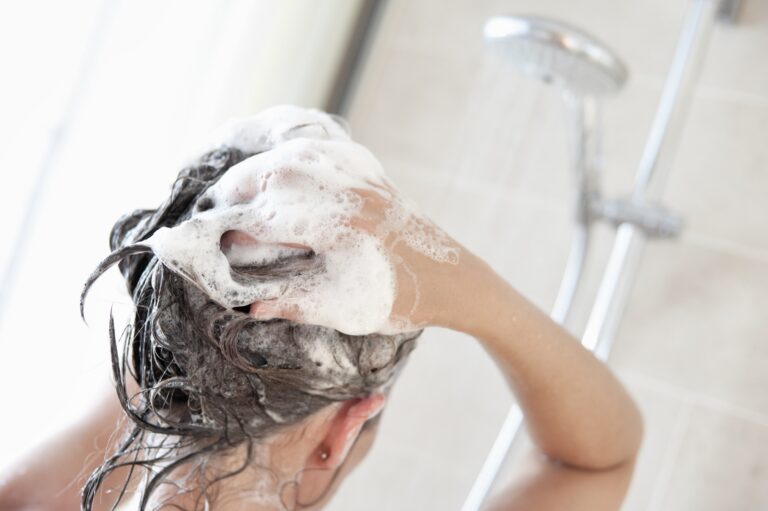P&G’s latest patent focuses on a common issue faced by many consumers – the poor performance of personal care products in hard water. With an estimated 85% of U.S. homes having hard water, the new formulation aims to address a pressing need for the majority of hair care product consumers.
Here are CosmeticsDesigns’ key takeaways about the new patent, including a look at growing consumer demand for innovation in this space and its potential impact on the industry.
Addressing the impact of hard water on cleaning
Hard water contains high levels of minerals such as calcium and magnesium, which can dramatically affect the performance of personal care products such as shampoos and body washes. The dissolved minerals form metal ions that combine with surfactants to reduce lathering and cleaning effectiveness.
As the patent states, “Personal care compositions such as shampoos, conditioners and body washes, when used in hard water, tend to produce less lather than when used in soft water.” This leads to reduced consumer satisfaction since lathering is commonly associated with cleaning effectiveness.
P&G’s new formulation addresses this issue by incorporating acyltaurate and N-alkylacyltaurate surfactants, which “improve foaming in hard water” and help the product maintain performance in environments with high mineral content. This is a game changer for consumers living in hard water areas, promising to provide a superior experience without compromising effectiveness.
Consumers prefer sulfate-free products
The patent also highlights growing consumer demand for sulfate-free products that are perceived to be gentle and gentle on hair and skin, but these formulations often come with drawbacks.
As the patent explains, “recent trends indicate that consumers are looking to replace sulfate cleaning agents with milder sulfate-free products,” but traditional sulfate-free products are often “perceived as less effective due to poor lathering compared to sulfate-containing products.”
This challenge is exacerbated in hard water conditions, where a lack of sulfate further reduces the product’s foam-producing capabilities.The patent highlights that the combination of acyltaurine and N-alkylacyltaurine surfactants in P&G’s formulations provides desirable “foam and lather characteristics” even in hard water, making it a solution that meets both consumer preferences and practical challenges.
Focus on improving formulation stability
Beyond the foaming issue, P&G’s patent addresses several other formulation challenges. For example, one common problem with sulfate-free shampoos is the inability to maintain the proper viscosity.
The patent explains that “the alkylmethyl group attached to the amide nitrogen of SMCT and SMLT can make it difficult to thicken aqueous personal care compositions. Without sufficient viscosity, the product can be difficult to apply and may be perceived by consumers as being of lower quality.”
P&G’s formulation overcomes this challenge by adding electrolytes, such as inorganic salts, to thicken the composition, which, according to the patent, makes the product easier to dispense and more easily applied in a controlled manner, further enhancing the consumer experience.
The patent explains that the new formulation has “the right solubility, stability, foaming and cleaning properties” that are crucial for any personal care product.
Combines mildness and conditioning in one product
P&G’s new formula not only improves lather and viscosity, but also allows for the inclusion of conditioning agents that are often difficult to achieve in sulfate-free products. Conditioning shampoos typically combine anionic cleansing surfactants with cationic conditioning polymers to improve hair feel and tangles.
However, as the patent states, “if coacervates form within the product prior to use, some of the surfactants will bind, reducing the amount of surfactant available for foaming and cleaning,” which can be a drawback in sulfate-free systems.
P&G addressed this issue by designing formulations that could combine surfactants and conditioning polymers with minimal impact on lather. The patent states, “It has further been found that these surfactant combinations can be combined with cationic polymers with little or no adverse effect on lather properties.”
This advancement allows P&G’s new products to offer both cleaning and conditioning benefits while delivering the rich lather that consumers associate with quality.
Industry impacts and opportunities
For manufacturers and suppliers in the cosmetics and personal care industries, this patent has the potential to have a significant impact on future product development. P&G’s innovation not only meets the demand for sulfate-free formulations, it also solves performance issues associated with hard water, a factor that affects a large portion of the global population.
By overcoming the lather, viscosity and conditioning limitations of traditional sulfate-free products, the patent suggests that this new formulation has the potential to set a new standard for high-performance sulfate-free hair care products.
The industry is already moving toward sulfate-free, more natural formulations, but to date these products have suffered from performance issues, especially in hard-water environments. P&G’s new formulation could inspire competitors to develop similar high-performance products that they can sell to consumers who live in hard-water areas.
Additionally, this innovation creates an opportunity for new product lines focused specifically on hard water challenges, providing a key differentiator in an increasingly competitive market.

